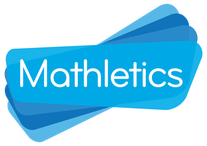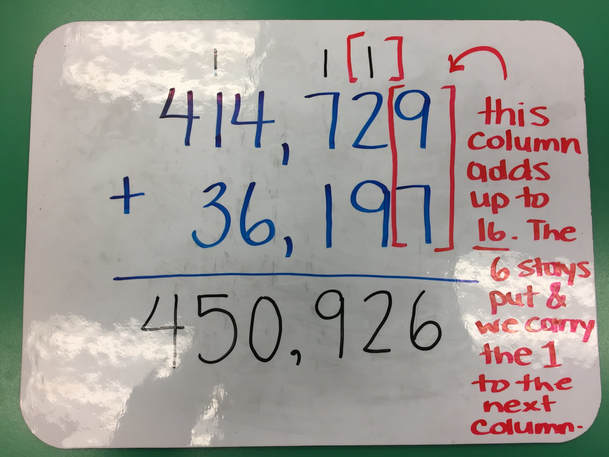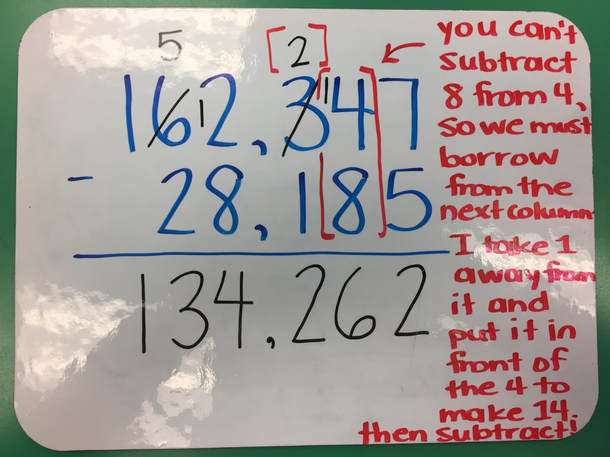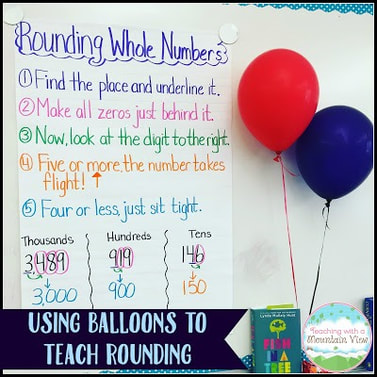Math
Decimal Place Value (to millionths)
|
A decimal is basically a way to write part of a number. Think about money. If we have 25 cents, we don't have a whole dollar, right? So we would write 25 cents in number form as 0.25.
Just like our whole number practice until this point, decimals have place values. This week, we'll be focusing on how to write decimals and their fraction forms as well as comparing and ordering decimal numbers. |
Prime Factorization, Least Common Multiple, and Greatest Common Factor
Over the past several weeks, we have been working on distinguishing the difference between prime and composite numbers as well as learning how to factor. We also just completed breaking numbers down into their prime factorization using a method called factor trees.
Next we are heading into learning about Least Common Multiples and Greatest Common Factors. This will put our factoring skills to the test! Here is a quick video that reviews how to find a factor as we prepare to solve these new problems:
Next we are heading into learning about Least Common Multiples and Greatest Common Factors. This will put our factoring skills to the test! Here is a quick video that reviews how to find a factor as we prepare to solve these new problems:
Multiplication & Division Units: Introduction to Fact Fluency
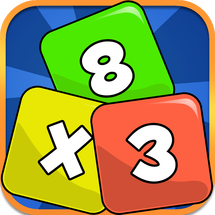
As we begin our unit on multiplication and division, we focus first on understanding and facts.
First of all, do you know what the word multiplication actually means? What about division? If so, how would you describe them? Second, if someone fired you a factual question, how long does it take you to respond?
By Grade 6, students should be approaching near fluency in their multiplication and division facts up to 10 x 10 (or 100/10). This means that when someone fires you an unexpected multiplication or division question, it should take you less than a few seconds to respond. For those of you that have mastered this already and need an extension, I would recommend knowing your facts up to 15s.
Multiplication fluency practice begins by taking a step back to the basics. Our IXL assignment this week is in the Grade 4 category of IXL so we can revisit multiplication fluency at those levels. I will also be introducing a number of math games and strategies this week that will help us to practice multiplication fact fluency.
First of all, do you know what the word multiplication actually means? What about division? If so, how would you describe them? Second, if someone fired you a factual question, how long does it take you to respond?
By Grade 6, students should be approaching near fluency in their multiplication and division facts up to 10 x 10 (or 100/10). This means that when someone fires you an unexpected multiplication or division question, it should take you less than a few seconds to respond. For those of you that have mastered this already and need an extension, I would recommend knowing your facts up to 15s.
Multiplication fluency practice begins by taking a step back to the basics. Our IXL assignment this week is in the Grade 4 category of IXL so we can revisit multiplication fluency at those levels. I will also be introducing a number of math games and strategies this week that will help us to practice multiplication fact fluency.
Addition & Subtraction of Whole Numbers
Estimating has been going on for weeks and now we're ready for the real deal - addition and subtraction of whole numbers up to the billions place!
When adding, we need to remember to add columns together and regroup when necessary. Regrouping happens when a column adds up to 10 or more. We must carry the additional digit to the next column and add it to the numbers present there.
When adding, we need to remember to add columns together and regroup when necessary. Regrouping happens when a column adds up to 10 or more. We must carry the additional digit to the next column and add it to the numbers present there.
However, in subtraction, the rules are different. When we are subtracting, we must always subtract going down. That, is we take away the bottom number from the top number no matter what. But what happens when the top digit isn't big enough to subtract the bottom number from? In that case, we borrow from the column to the left. Here are the steps:
- When we borrow, we must remember to take one away from the column we're borrowing from
- Put a 1 in front of the digit that we need to add the borrowed value to
- Then, do the math!
RoundingRounding numbers is trick used to find approximations of numbers. When you see the phrases "about how much" or "nearest hundred/thousand/ten" or "estimate," these are all asking for approximations of numbers.
This week, we're going to learn/review how to round numbers both large and small to particular place values (nearest ten, hundred, thousand, ten thousand, etc). |
Review: Place Value and Whole numbers... to billions
Grade 7 students should be able to compose and decompose whole numbers to the billions place. This week, we're reviewing the naming of these HUGE numbers and writing them in standard form, expanded form, and word form. Don't forget to split up each set of 3 numbers with a space so the numbers are easy to identify!
|
For the curious:
Are you wondering what a number with 100 zeros after it might be called? Check the button to the right! |
Review: Place Value |
This week we are exploring a math game is called Place Value Yahtzee. The download above has several levels of cards so that you can print and play at home! You can even customize your own (especially if you're ready to play up to billions already!).
Parents, be sure to challenge your child to fully name numbers (to billions and down to thousandths) and pull out digits that represent each place value.
Parents, be sure to challenge your child to fully name numbers (to billions and down to thousandths) and pull out digits that represent each place value.
